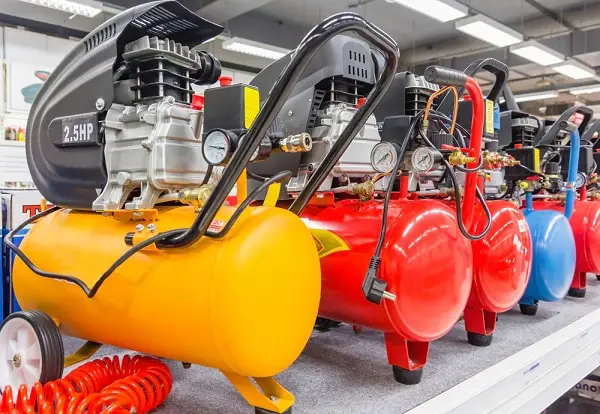
3 Most Common Problems with Atlas Copco Air Compressors (and Possible Solutions)
If you have an Atlas Copco air compressor, you can rest assured that you have a great and high-quality piece of machinery. The Atlas Copco brand has been in the air compressor business for more than one hundred years, which alone is social proof that their air compressors are well sought after by many. You’ll also find that their air compressors and other products are available in many countries all around the world.
Indeed, Atlas Copco is a great brand of air compressor to have. However, what separates the Atlas Copco brand from other big-time air compressor brands is that it tends to focus its efforts on offering air compressors for rent rather than for sale. Most users of Atlas Copco air compressors use the machines for a special project before eventually returning the otherwise expensive air compressor once the project is done.
With that being said, Atlas Copco still offers air compressors for sale to the everyday consumer, like you and I. While you won’t find all of their air compressors for sale (some can be very expensive), you can usually find a reciprocating or rotary screw type air compressor available for sale.
As with all pieces of machinery, no matter how great they may be, you may run into some problems with your Atlas Copco compressor. If that happens, no worries–we’re here to help. Let’s take a look at three of the most common problems with Atlas Copco air compressors and some possible solutions.
1. Compressor Doesn’t Start
First of all, you should check the obvious, such as making sure your compressor is connected to a proper power source. However, if it is indeed connected properly and still fails to start, it could be due to a lack of ample air pressure. This is usually caused by the cut-in pressure not being proportional to the total pressure stored in the tank. To fix, check whether the cut-in setting is set as needed. If not, adjust it to the correct level.
2. Air Flow is Only in Quick Bursts
If your compressor isn’t giving you a consistent flow of compressed air, you should check the reading of your gauge. If you find that it is much too low, you may not get the proper amount of air pressure from your tank. On the other end, if your air tank’s gauge is reading at around 100psi, you should set it instead to be about 90psi.
3. Compressor Fails to Generate Air Pressure
Sometimes you may find that your compressor runs fine yet doesn’t generate proper levels of pressure. When this happens, it’s usually due to either a faulty pump or gasket.
When the motor runs and is audible yet no air is yielded from your air compressor, it’s likely that your pump needs to be replaced. If you find that only a small amount of pressure is generated by your compressor, then it may be that the gasket needs to be replaced since it may be limiting proper airflow.
Related Video:

